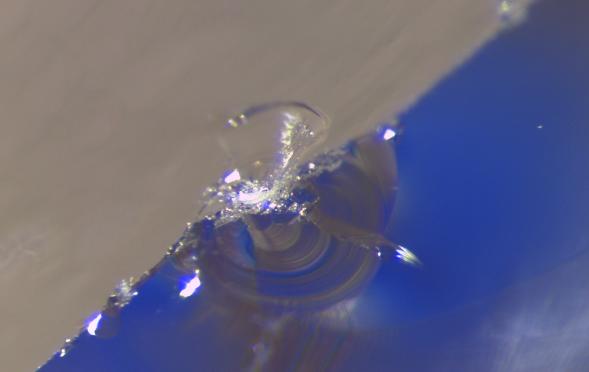Defect of the Month
Back to AGR's Library
Here in the United States, the fast food chain Chick-fil-A is renowned for their delectable fried chicken offerings. With just the right amount of crispy breading, their chicken nuggets are perfect for dipping into a variety of sauces, including the author’s favorite –Polynesian. This image of a stone in glass resembles a (rather bleached) nugget at the precise moment before being dunked into a (rather colorful) sauce. The “crispy breading” is comprised of small nodules of zirconia (ZrO2), which were created by the interaction of the glass melt with an AZS refractory. The glassy phase of the refractory dissolves over time, creating an alumina-rich solution sac and a stone of nodular zirconia. The “sauce” in this image is the induced stress in the surrounding glass, rendered visible with polarized light.

When a hard, pointed object smashes into a glass surface, it’s a bit like an ice pick biting into a frozen pond. Pronounced ripple markings extend downward from the impact site, while crushed glass marks the origin of the damage on the surface. Point contact damage is a sign of rough handling, and can be caused by glass fragments from a prior breakage event or exposed metal points somewhere in the factory. Lastly, the blue color in this image is not the actual glass color, but is just a reflection from an object used to enhance visibility of the surface markings.